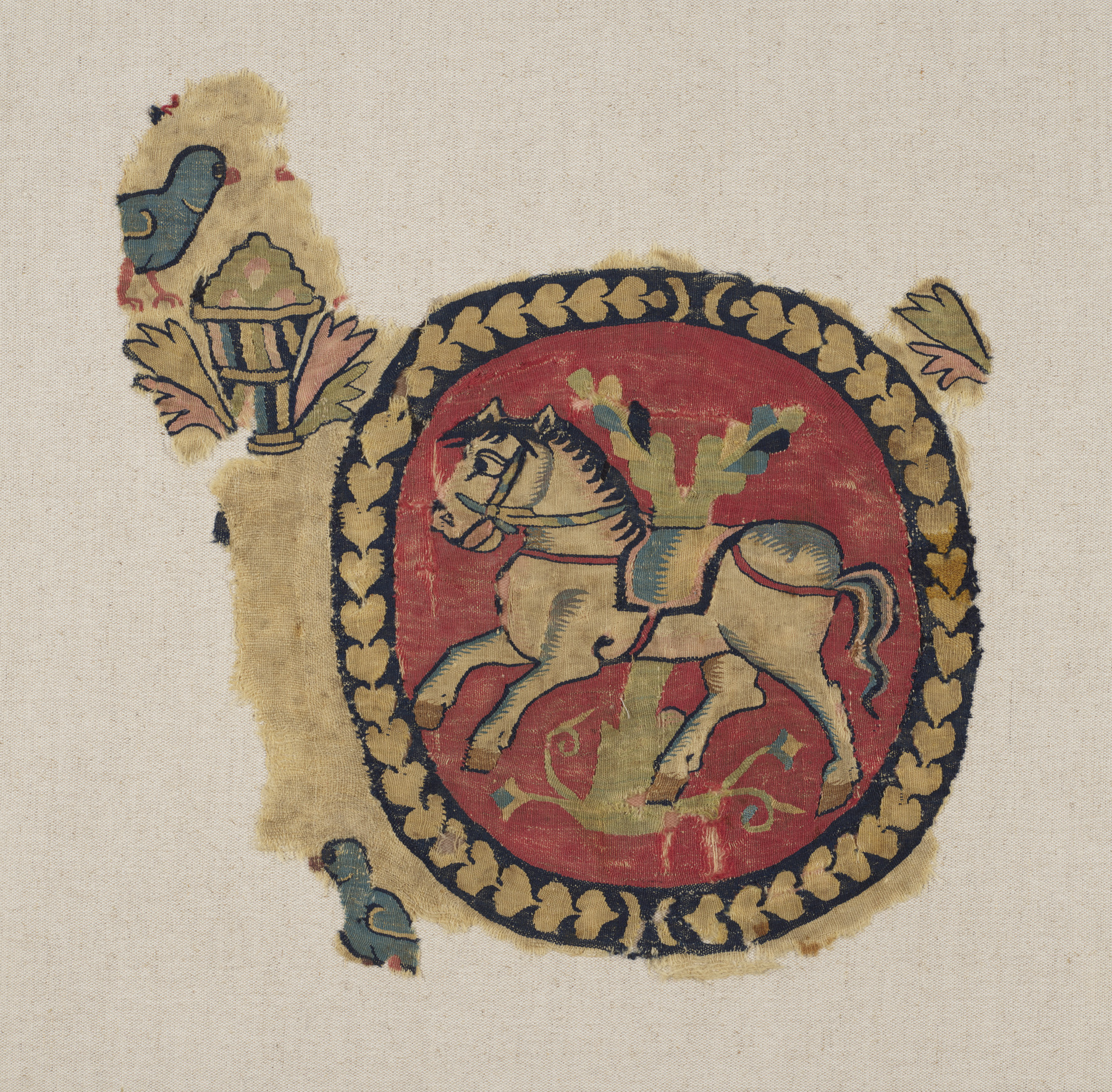Wall Hanging or Curtain Fragment with Riderless Horse
This whimsical, saddled, and fully harnessed but riderless horse was part of a larger curtain or wall hanging of a type popular in the late 5th and early 6th century.
Curtains and wall hangings were used in private homes, as well as in public and religious buildings, to prevent drafts, divide spaces, and provide privacy. The tapestry weave of this piece is ideal for such textiles, as it produces a design that can be viewed from either side.
The complete hanging likely would have had many identical roundels (one is in the Cleveland Museum of Art) in staggered rows on a background interspersed with baskets and birds. These designs are traditionally Egyptian, while the roundel borders of heart or rose petal chains and the stylized trees are adapted from imported Sassanian silks.
Provenance
Provenance (from the French provenir, 'to come from/forth') is the chronology of the ownership, custody, or location of a historical object. Learn more about provenance at the Walters.
Henry Walters, Baltimore [date and mode of acquisition unknown]; Walters Art Museum, 1931, by bequest.
Exhibitions
| 1989 | Beyond the Pharaohs: Egypt and the Copts in the Second to Seventh Centuries A.D.. Museum of Art, Rhode Island School of Design, Providence; The Walters Art Gallery, Baltimore. |
Geographies
Egypt (Place of Origin)
Measurements
H: 16 1/8 x W:17 5/16 x D: 1/16 in. (41 x 44 x 0.1 cm)
Credit Line
Acquired by Henry Walters
Location in Museum
Not on view
Accession Number
In libraries, galleries, museums, and archives, an accession number is a unique identifier assigned to each object in the collection.
In libraries, galleries, museums, and archives, an accession number is a unique identifier assigned to each object in the collection.
83.461




